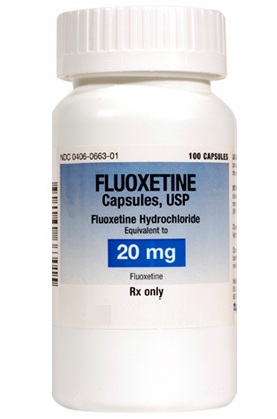Cheer Up: The Antidepressants from Canadian Pharmacies That Can Actually Help
Application Sphere of Antidepressants
The principle area of usage of antidepressants is treatment of depression. As a rule, these drugs are recommended in the capacity of the first line medicinal products for therapy of moderate or severe depressive conditions used in combination with talking therapy, such as cognitive-behavioral for instance.

Antidepressants may be used for the treatment of other psychic disorders and impairments including:
- Anxious disorder;
- Obsessive-compulsive disorder;
- Panic disorders;
- Severe phobias, such as agoraphobia and social anxiety disorder;
- Bulimia;
- Post-trauma stress disorder.
It is not infrequent that depression occurs on the setting of sexual issues. In these cases psychotherapists recommend attending counseling sessions.
Although some antidepressants (e.g. tricyclic) initially were not developed as analgesics, it was possible that they were effective for treatment of chronic (long-term) pains of nervous character. Chronic nervous pains also called neuropathic occur as a result of disturbance or other disorders of normal nerve condition. Generally they are not relieved by traditional analgesics, such as paracetamol and others. Antidepressants are also used for treatment of chronic pains of non- neuropathic character. Nevertheless, they are considered to be less efficient for such purposes. Pains which are not connected with nervous disorders may be relieved by means of antidepressants in cases of fibromyalgia and chronic pains in back and neck as well.
Related news: Viagra and ED Brought On By Antidepressants
Depression
In order to understand the mode of antidepressants action, it is important to pay attention to the depression phenomenon itself. Major depressive disorder which is also called unipolar depression, may occur practically at each age (its appearance is possible even among children at the age of five years), but more often it affects people between 25 and 44 years of age. Around 10 of men and 20% of women are exposed to this disorder. Depression causes the loss of working and learning capacity, and general feeling of being unwell. On the top of that it is one of the most frequent causes of committing suicide.
As opposed to short periods of feeling unwell, clinical depression is a constant change of mood which may influence adversely the family climate, relations with people and self-esteem. Periodical depressive episodes may continue within the course of many days, months or years.
Clinical depression has the following physical and psychic symptoms:
- depressed mood (sadness, sorrow);
- Loss of interest to the things that a person liked earlier. Loss of zest for life;
- Sleep disorder;
- Tiredness;
- Feeling sick, desperation, helplessness, dismay;
- Loss of appetite, weight or vice versa – its sudden gain;
- Loss of sexual interest;
- Incapability to concentrate or take decisions.
In order to diagnose depression, these symptoms should be repetitive within at least two weeks. In is worth mentioning that these symptoms may be consequences of other diseases (such as hypertension, diabetes, cardiac disorders, etc.). Thus, it is likely that depressive episode is a secondary symptom of other disease. The final diagnosis may be confirmed by a doctor after long-term examination and observation.
It should be borne in mind that:
- Each person may find antidepressant suitable personally for him or her effortlessly;
- Six out of ten will feel better after the intake of the first selected antidepressant. Others should try difference antidepressants in order to find the most suitable one;
- All antidepressants have their advantages and disadvantages. Until you start using some of them, you won’t be able to know for sure whether it is helpful in depression struggle or not.
Antidepressants are classified in accordance with neurotransmitter types which are influenced by them and their mode of action as well.
Types of Antidepressants available in Canadian Pharmacies
There are the following types of antidepressants:
- Selective serotonin reuptake inhibitors (SSRIs)
Being the most frequently-prescribed antidepressants, SSRIs have entered pharmaceutical market in the middle of 1980s. Antidepressants of the given group block serotonin return to presynaptic cell (i.e. the cell sending nerve impulse). This action increases serotonin concentration in synaptic opening between nerve cells enhancing stimulation of accepting impulse post-synaptic cell.
SSRIs include the following medications:
- Fluoxetine (Prozac);
- Paroxetine (Paxil);
- Sertraline (Zoloft);
- Fluvoxamine (Fevarin);
- Citalopram (Celexa);
- Citalopram (Lexapro).
SSRIs are equally effective and are tolerated by patients in a similar way. Nevertheless, the reaction of each person on these or those chemical compositions is individual. Therefore, some patients may feel more side-effects after the intake of particular selective serotonin reuptake inhibitor. Adverse effects of this type of antidepressants include nausea, vomit, vertigo, insomnia and anxiety.
- Tricyclic antidepressants
Tricyclic antidepressants hit the shelves in the end of 1950s – beginning of 190s. Like SSRIs, these compositions block neurotransmitter reuptake (in the given case of epinephrine) in presynaptic nerve cell resulting in increasing of its free concentration.
This group is represented by:
- Nortriptyline (Pamelor);
- Maprotiline (Ludiomil);
- Desipramine (Norpramin);
- Amitriptyline (Elavil);
- Clomipramine (Anafranil);
- Lmipramine (Imipramine).
Tricyclic antidepressants influence the frequency of cardiac contractions and arterial blood pressure, since norepinephrine is involved into activity of autonomic nervous system controlling these functions. Their side-effects include postural hypotension (decrease of arterial blood pressure in the upright position), tachycardia (rapid heart palpitation), dryness in mouth, as well as urinary retention. Medications belonging to this group are rarely used because of their toxicity and danger of overdose. Anyway, tricyclic antidepressants are the way out for patients who cannot tolerate SSRIs and other antidepressants. Within the whole therapy course, a thorough control by a doctor is required in order to avoid side-effects.
- Serotonin and norepinephrine reuptake inhibitors
These medications were launched into production in the middle of 1990s.Their action was based on the blockage of reuptake of both serotonin and norepinephrine.
These inhibitors include:
- Bupropione (Zyban, Wellbutrin) blocking dopamine and norepinephrine reuptake;
- Duloxetine (Cymbalta);
- Venlafaxine (Effexor).
The adverse effects of these medicinal products are similar to those of SSRIs, but they are much less pronounced. Bupropione and duloxetine in particular have minimum side-effects in regards to erectile dysfunction and weight gain.
- Monoaminooxidase inhibitors (IMAO)
Enzyme called monoaminooxidase may lead to the decrease of serotonin and norepinephrine in synaptic cleft between neurons and presynaptic nerve cell. IMAOs block its action increasing concentration of the aforementioned neurotransmitters.
This group of antidepressants includes the following pharmaceutical products:
- Phenelzine (Nardil);
- Tranylcypromine (Parnat);
- Selegiline (Eldepryl);
- Isocarboxazide (Marplan);
- Moclobemid (Manerx).
By changing the content of norepinephrine, these medications have a number of side-effects influencing cardio-vascular system. During the intake of these antidepressants, patients must restrict the usage of products containing tyramine in connection with the fact that IMAOs interact with tyramine causing hypertension. Tyramine is contained in such products as soy sauce, sour-crout, chicken and beef liver, blue cheese, sausage, air-dried meat, fish, yoghurt, raisins, fig, sour cream. Besides, patients must refuse alcohol while taking one of the aforementioned antidepressants.
- Noradrenergic and specific serotonergic antidepressants (NaSSA)
This is the group of modern antidepressants which are well tolerated and help a patient to cope perfectly with depression and anxiety. They have much less side-effects than the previous generations of antidepressants. Some of these compositions appeared in the mid of 1980s, whereas the others came on the market very recently. NaSSAs slow down the absorption of norepinephrine by presynaptic nerve cell enhancing its concentration in free form. Besides, they block some of serotonin receptors causing improvement of serotonin neurotransmission.
NaSSAs include:
- Mirtazapine (Remeron);
- Trazodone (Dezirel);
- Nefazodone (Serzone);
- Mianserin (Lerivon).
The most widely-spread side-effects are drowsiness, dryness in mouth, increased appetite and weight gain. It is worth mentioning that these side-effects have subtle effect.
Remember that practically all existing antidepressants are equally efficient for depression treatment. Thus, the selection must be based on dependence on age, hereditary background, individual tolerability of this or that medicinal product, side-effects and reaction on already utilized antidepressants. Before the intake of antidepressants it is strongly recommended consulting by a specialist.






